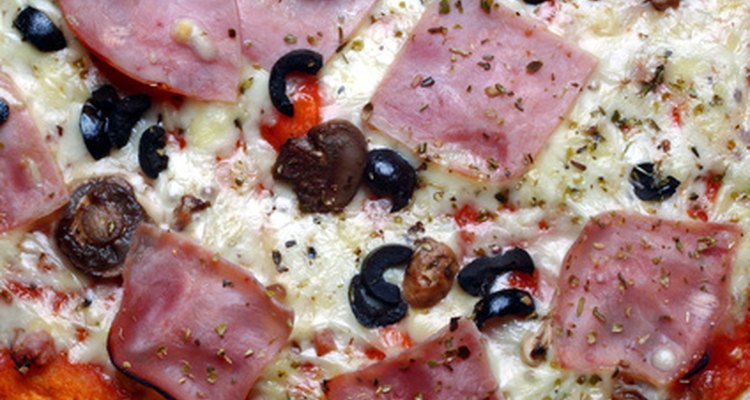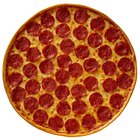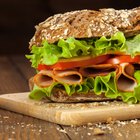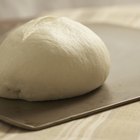
Founded in 1984 by “Papa” John Schnatter, Papa John’s restaurant follows a principle of “Better Ingredients, Better Pizza.” This principle has allowed Papa John’s to expand into a national pizza chain offering a variety of traditional and specialty pizzas that can be delivered to your doorstep. One of the most significant additions to the Papa John’s menu was a whole-wheat crust made from 100 percent whole grains.
Function
Papa John’s offers a choice of four crusts -- hand-tossed original, thin crust, pan crust and whole wheat. The addition of the whole wheat crust to the list of crusts gives customers a “healthier” crust choice. All of the Papa John’s pizza options can be ordered with the whole wheat crust.
Features
The whole wheat crust is made by combining specific quantities of 100 percent whole grains, high-protein flour and filtered water. This blend of ingredients gives the whole wheat crust a similar appearance and texture to the hand-tossed original crust.
Size
Whole wheat pizza contains a similar amount of calories, carbohydrates and saturated fat as the original crust pizza. Nearly 50 percent of the calories come from carbohydrates with 35 percent coming from fat and the final 15 percent coming from protein. The whole wheat pepperoni pizza, for example, contains 300 calories per slice with 37 g of carbohydrates and 4 g of saturated fat.
Benefits
While most of the macronutrient -- carbohydrates, fat and protein -- amounts are similar to other crusts, the major difference in the whole wheat crust is the increased amount of fiber. The whole wheat cheese pizza, for example, contains 5 g of dietary fiber for 20 percent of the daily recommended intake while the thin crust pepperoni pizza contains only 1 g of dietary fiber for 4 percent of the daily recommended intake.
Considerations
Papa John’s whole wheat pizzas still contain significant amounts of saturated fat and sodium with only limited amounts of vitamins and minerals. One slice of the whole wheat pepperoni pizza contains 790 mg of sodium and the original crust pepperoni pizza contains 810 mg. The 730 mg of sodium on the whole wheat cheese pizza provides 30 percent of the daily recommended intake and the 3.5 g of saturated fat provides 18 percent.
Related Articles

Can Pizza Be a Post-Workout Meal?

How to Freeze an Unbaked Pizza Crust

How to Cook a Frozen Pizza on the ...

How to Grill With a Pizza Stone and ...

Dominos Nutrition Information

How to Address an Envelope With ...

Do You Put Olive Oil on the Pizza Dough ...

How to Cook Two DiGiorno Pizzas at Once

Calories in the Subway 6 Inch Ham & ...

How to Bake With a Pizza Screen

Domino's Bread Bowl Pasta Nutrition ...

How to Make Flatbread Pizzas

How to Bake Pizza Dough So It Will Not ...

Low-Fat Breakfast Quiche

How to Make Homemade Pizza Without Yeast

Is Whole-Wheat Pizza Healthy?

How to Make a Pie Crust Brown at the ...

Portillos / Barnellis Nutrition ...

What to Do With Pizza Dough When You're ...

Calories in Pimento Cheese
References
Writer Bio
Based in Nebraska, Jeremy Hoefs began writing fitness, nutrition, outdoor and hunting articles in 2006. His articles have been published in "Star City Sports," "Hunting Fitness Magazine" and RutWear field journals, as well as on the Western Whitetail website. Hoefs graduated with a Bachelor of Science in exercise science from Nebraska Wesleyan University.
Photo Credits
pizza image by Claudio Calcagno from Fotolia.com